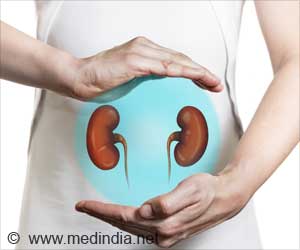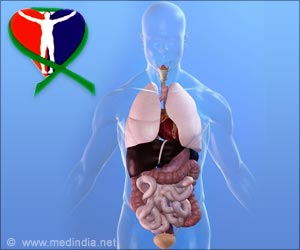What is circulating cell-free DNA, and how can it change healthcare? Discover how cfDNA offers non-invasive insights for cancer, prenatal care, and organ transplants.
- CfDNA offers a non-invasive way to detect and monitor diseases like cancer and genetic conditions
- Liquid biopsies using cfDNA are making personalized treatment plans more accessible and effective
- CfDNA analysis is advancing early disease detection and personalized healthcare, but cost and technology challenges remain
Technical Advances in Circulating Cell-Free DNA Detection and Analysis for Personalized Medicine in Patients' Care
Go to source).
A simple blood test can now reveal DNA fragments from dying cells in your body- helping doctors detect diseases like cancer and even monitor transplanted organs! #healthcare #cfdna #liquidbiopsy #medindia’
What is Circulating Cell-Free DNA (cfDNA)?
CfDNA refers to short fragments of DNA released into the bloodstream when cells die due to natural processes like apoptosis (programmed cell death) or necrosis (cell death due to injury or disease). These DNA fragments circulate freely in body fluids and can be found in healthy individuals as well as those with conditions such as cancer, inflammation, or after organ transplants.The concentration of cfDNA in the blood can vary significantly depending on factors such as age, body mass index (BMI), exercise, and underlying medical conditions. In healthy individuals, cfDNA is primarily released from blood cells, but it can also originate from tumor cells, transplanted organs, or even a developing fetus in pregnant women.
Clinical Applications of Circulating Cell-Free DNA (cfDNA)
CfDNA has numerous clinical applications, particularly in three key areas: oncology, prenatal testing, and organ transplantation.Oncology (Cancer Detection and Monitoring)
In cancer patients, cfDNA, particularly circulating tumor DNA (ctDNA), can provide critical insights into the genetic makeup of tumors. This helps doctors detect cancer early, monitor how well a patient is responding to treatment, and track any recurrence of the disease. By analyzing specific genetic mutations in ctDNA, oncologists can personalize treatment plans and make more informed decisions about therapies that are most likely to be effective for individual patients.
Moreover, cfDNA allows for the monitoring of cancer without the need for invasive tissue biopsies, making it a preferred option for patients and doctors alike. This method, often referred to as a "liquid biopsy," is a less invasive and faster alternative to traditional biopsy procedures.
Prenatal Screening (Non-Invasive Prenatal Testing or NIPT)
CfDNA is also revolutionizing prenatal care through non-invasive prenatal testing (NIPT). By analyzing fetal cfDNA present in the mother's blood, doctors can screen for genetic disorders such as Down syndrome and other chromosomal abnormalities. This method offers a safer alternative to invasive procedures like amniocentesis, reducing the risk of complications for both the mother and the baby.
NIPT can be performed as early as 5-7 weeks into pregnancy and provides highly accurate results, allowing expecting parents to make informed decisions about their pregnancy with minimal risk.
Organ Transplantation (Monitoring Graft Health)
In organ transplant recipients, cfDNA analysis helps doctors monitor the health of the transplanted organ by detecting donor-derived cfDNA (dd-cfDNA) in the recipient's bloodstream. A rise in dd-cfDNA levels can signal organ rejection, enabling early intervention and improving patient outcomes. This method is more sensitive than traditional monitoring techniques like biopsies, offering a non-invasive and timely way to detect potential complications.
Challenges in Circulating Cell-Free DNA (cfDNA) Analysis
While cfDNA analysis holds great promise, it still faces several challenges that limit its widespread use in routine diagnostics.
Low Abundance
CfDNA is present in very small quantities, which makes its detection difficult. Even though technologies like digital PCR (Polymerase Chain Reaction) and next-generation sequencing (NGS) have significantly improved the sensitivity of cfDNA detection, more work is needed to make these tests even more reliable and accessible.
Sample Quality
Collecting high-quality cfDNA samples is crucial for accurate analysis. Because cfDNA degrades quickly in the bloodstream, it’s essential to handle and process samples carefully. Special tubes and processing methods are used to prevent contamination from genomic DNA, which can affect test results. Two-step centrifugation is often employed to ensure the purity of the cfDNA sample.
Cost and Accessibility
Although cfDNA testing has become more affordable in recent years, it is still relatively expensive, and the equipment needed for analysis is not widely available in all healthcare settings. This limits the routine use of cfDNA in diagnostics, especially in low-resource areas.
Advancements in Cell-Free DNA (cfDNA) Analysis
Recent advancements in cfDNA analysis, especially in NGS, have improved the precision and depth of genetic testing. NGS-based methods allow scientists to sequence large portions of the genome at once, identifying even the smallest DNA fragments. This high level of accuracy is crucial for detecting rare mutations and identifying specific genetic markers in diseases like cancer.For example, ctDNA analysis can reveal mutations that make a tumor resistant to certain treatments, allowing doctors to adjust therapies accordingly. Similarly, dd-cfDNA testing in organ transplant patients can provide early warnings of organ rejection, even before symptoms appear. These advancements are helping cfDNA analysis become more widespread, making personalized care more accessible to patients. As costs continue to decrease, we can expect to see cfDNA testing being used more frequently in clinics and hospitals around the world.
CfDNA is paving the way for a new era in non-invasive diagnostics. Its ability to provide real-time insights into a patient’s health through a simple blood test has the potential to revolutionize how we detect, monitor, and treat a wide range of diseases. From cancer and prenatal screening to organ transplantation, cfDNA analysis is proving to be a powerful tool for personalized medicine.
However, challenges remain, particularly in terms of improving the sensitivity of detection methods and making these tests more affordable and accessible. As technology continues to advance, cfDNA will likely become a routine part of medical diagnostics, offering patients better care with fewer invasive procedures.
In summary, circulating cell-free DNA holds immense promise for improving patient outcomes across various medical fields. As research continues to validate its effectiveness, cfDNA may soon play a central role in the future of healthcare, offering a path to more accurate, personalized, and non-invasive medical care.
Reference:
- Technical Advances in Circulating Cell-Free DNA Detection and Analysis for Personalized Medicine in Patients' Care - (https://www.mdpi.com/2218-273X/14/4/498)
Source-Medindia












